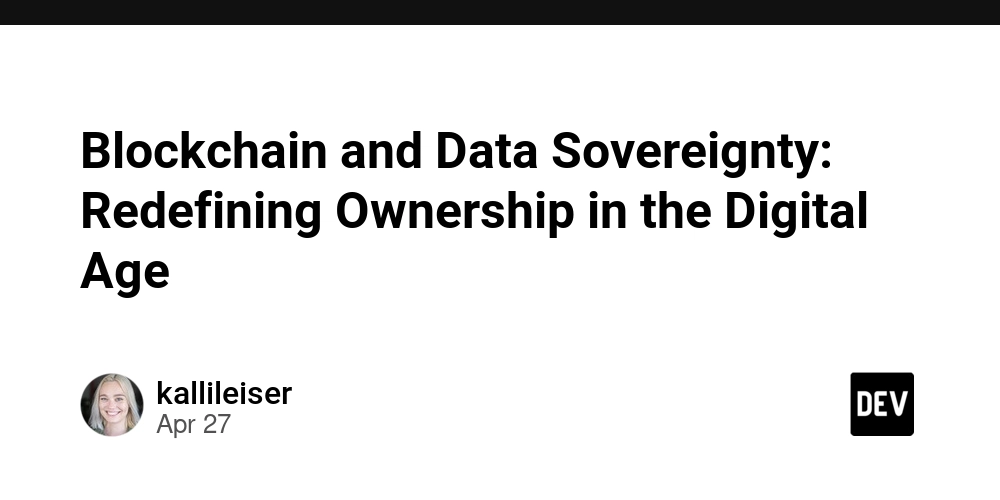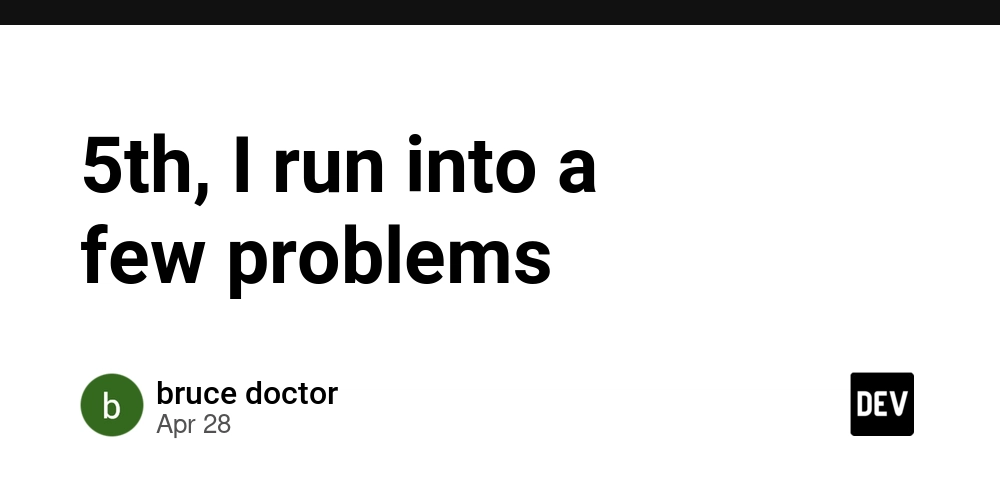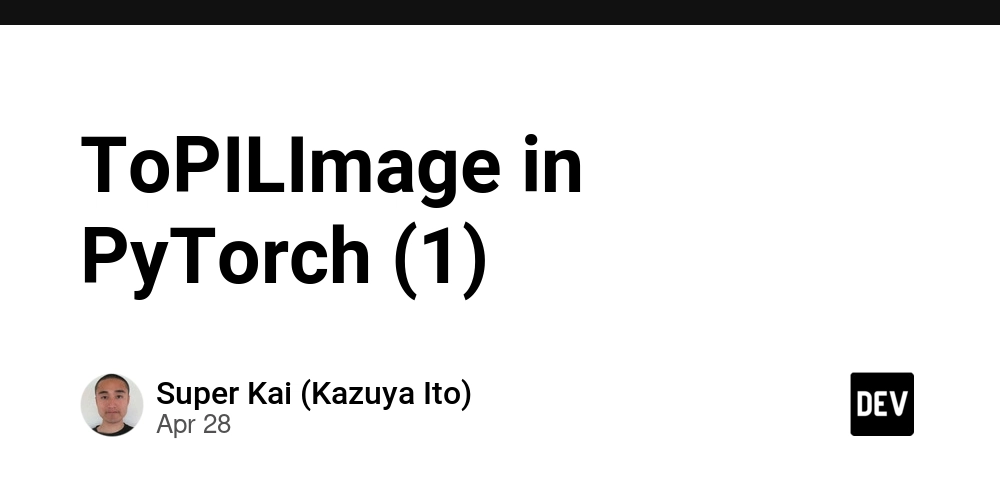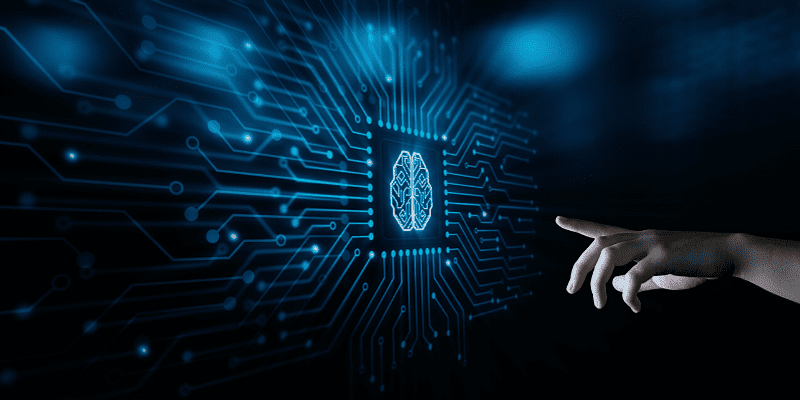Blockchain and Data Sovereignty: Redefining Ownership in the Digital Age
Abstract This post dives deep into how blockchain technology is reshaping data sovereignty in the digital landscape. It covers the history and core concepts of blockchain, explains data sovereignty through regulatory frameworks like GDPR, and outlines the technical features—from decentralization and immutability to smart contracts and data interoperability—that empower individuals with data control. We explore practical applications, discuss challenges such as scalability and regulatory uncertainty, and look forward to innovations in sustainable blockchain practices. By linking to authoritative sources and related projects, this article serves as a holistic guide for technologists, developers, and enthusiasts eager to understand and leverage blockchain for better data sovereignty. Introduction In an era of constant data breaches and growing privacy concerns, blockchain technology has emerged as a groundbreaking tool that can redefine how we own and manage digital data. At its core, blockchain provides a decentralized ledger that is transparent, secure, and immutable. This capability has profound implications for data sovereignty—a concept where individuals or countries have control over their digital information and its governance. As governments and organizations alike seek greater transparency and improved data management, integrating blockchain with data sovereignty principles offers new opportunities for automation, compliance, and control. In this post, we discuss the potential of blockchain for redefining digital ownership and provide a detailed analysis of its features, challenges, and future outlook. Background and Context Blockchain technology originated as the backbone of cryptocurrencies such as Bitcoin. However, its decentralized structure and robust security features quickly captured the attention of industries beyond finance. Unlike traditional centralized databases, a blockchain is maintained across multiple nodes, ensuring that no single entity has absolute control. Key Historical Milestones and Definitions: Blockchain Basics: A blockchain is essentially a digital ledger where data is stored in blocks that are linked together. Each block contains a cryptographic hash, a timestamp, and transaction data. For more details, visit Blockchain Basics. Data Sovereignty: Data sovereignty refers to the data governance policies established by nations or organizations to protect local data based on regulatory frameworks such as the GDPR. Countries are increasingly implementing these laws to ensure that data generated within their borders remains controlled by local or authorized entities. The Evolution of Data Control: Historically, data control has been centralized in large institutions. Today, advances in blockchain technology are shifting that balance toward individuals and decentralized systems, empowering users with enhanced privacy and ownership rights. The blockchain ecosystem has matured significantly, paving the way for its integration into data management strategies across industries. From its early days as a currency enabler to its current role in digital rights management, blockchain plays a pivotal role in providing an immutable and transparent record of transactions. Core Concepts and Features Blockchain’s structure and design bring about several technical attributes that are critical for ensuring data sovereignty. Here, we discuss the key features: Decentralization and Control Decentralized Architecture: Blockchain operates without a central authority, meaning that control is distributed across a network. This decentralization means no single entity can alter transaction history or data integrity without consensus from multiple nodes. For a deep dive into decentralization, check out Blockchain Decentralization. Empowering Individuals: By shifting data control to users, blockchain frameworks provide individuals with the right to own and manage their digital assets securely. This empowerment is essential in preserving data sovereignty at an individual and national level. Immutability and Security Immutable Records: Once data is recorded on the blockchain, it cannot be changed or deleted without trace. This guarantees high levels of data integrity and trust, minimizing risks associated with data tampering. Enhanced Security through Cryptography: The use of cryptographic techniques ensures that data remains secure and that unauthorized alterations are virtually impossible. For more insights, refer to Blockchain Security. Smart Contracts and Automated Compliance Smart Contracts: Smart contracts are self-executing agreements that trigger actions when predefined conditions are met. They reduce the need for intermediaries, automate compliance, and ensure that data sharing policies are enforced automatically. To learn more about smart contracts, visit Smart Contracts. Automated Regulatory Compliance: Wit

Abstract
This post dives deep into how blockchain technology is reshaping data sovereignty in the digital landscape. It covers the history and core concepts of blockchain, explains data sovereignty through regulatory frameworks like GDPR, and outlines the technical features—from decentralization and immutability to smart contracts and data interoperability—that empower individuals with data control. We explore practical applications, discuss challenges such as scalability and regulatory uncertainty, and look forward to innovations in sustainable blockchain practices. By linking to authoritative sources and related projects, this article serves as a holistic guide for technologists, developers, and enthusiasts eager to understand and leverage blockchain for better data sovereignty.
Introduction
In an era of constant data breaches and growing privacy concerns, blockchain technology has emerged as a groundbreaking tool that can redefine how we own and manage digital data. At its core, blockchain provides a decentralized ledger that is transparent, secure, and immutable. This capability has profound implications for data sovereignty—a concept where individuals or countries have control over their digital information and its governance. As governments and organizations alike seek greater transparency and improved data management, integrating blockchain with data sovereignty principles offers new opportunities for automation, compliance, and control. In this post, we discuss the potential of blockchain for redefining digital ownership and provide a detailed analysis of its features, challenges, and future outlook.
Background and Context
Blockchain technology originated as the backbone of cryptocurrencies such as Bitcoin. However, its decentralized structure and robust security features quickly captured the attention of industries beyond finance. Unlike traditional centralized databases, a blockchain is maintained across multiple nodes, ensuring that no single entity has absolute control.
Key Historical Milestones and Definitions:
Blockchain Basics:
A blockchain is essentially a digital ledger where data is stored in blocks that are linked together. Each block contains a cryptographic hash, a timestamp, and transaction data. For more details, visit Blockchain Basics.Data Sovereignty:
Data sovereignty refers to the data governance policies established by nations or organizations to protect local data based on regulatory frameworks such as the GDPR. Countries are increasingly implementing these laws to ensure that data generated within their borders remains controlled by local or authorized entities.The Evolution of Data Control:
Historically, data control has been centralized in large institutions. Today, advances in blockchain technology are shifting that balance toward individuals and decentralized systems, empowering users with enhanced privacy and ownership rights.
The blockchain ecosystem has matured significantly, paving the way for its integration into data management strategies across industries. From its early days as a currency enabler to its current role in digital rights management, blockchain plays a pivotal role in providing an immutable and transparent record of transactions.
Core Concepts and Features
Blockchain’s structure and design bring about several technical attributes that are critical for ensuring data sovereignty. Here, we discuss the key features:
Decentralization and Control
Decentralized Architecture:
Blockchain operates without a central authority, meaning that control is distributed across a network. This decentralization means no single entity can alter transaction history or data integrity without consensus from multiple nodes. For a deep dive into decentralization, check out Blockchain Decentralization.Empowering Individuals:
By shifting data control to users, blockchain frameworks provide individuals with the right to own and manage their digital assets securely. This empowerment is essential in preserving data sovereignty at an individual and national level.
Immutability and Security
Immutable Records:
Once data is recorded on the blockchain, it cannot be changed or deleted without trace. This guarantees high levels of data integrity and trust, minimizing risks associated with data tampering.Enhanced Security through Cryptography:
The use of cryptographic techniques ensures that data remains secure and that unauthorized alterations are virtually impossible. For more insights, refer to Blockchain Security.
Smart Contracts and Automated Compliance
Smart Contracts:
Smart contracts are self-executing agreements that trigger actions when predefined conditions are met. They reduce the need for intermediaries, automate compliance, and ensure that data sharing policies are enforced automatically. To learn more about smart contracts, visit Smart Contracts.Automated Regulatory Compliance:
With smart contracts, organizations can embed legal requirements into code, automatically adhering to standards such as GDPR or other local data protection laws.
Data Portability and Interoperability
Interoperability Across Platforms:
Blockchain solutions promote seamless data movement between various systems, enabling better collaboration among stakeholders while preserving data sovereignty. For more on interoperability, visit Blockchain Interoperability.Enhanced Data Portability:
Users can transfer their data securely across different platforms and services while maintaining full control over their information.
Structured Feature Comparison
Below is a table that summarizes key blockchain features vital for data sovereignty:
| Feature | Description | Impact on Data Sovereignty |
|---|---|---|
| Decentralization | Distributes control across a network without a central authority. | Empowers individuals and prevents centralized misuse. |
| Immutability | Once recorded, data cannot be altered. | Ensures high data integrity and trustworthiness. |
| Smart Contracts | Self-executing contracts that enforce agreements automatically. | Streamlines compliance and minimizes human error. |
| Interoperability | Ability to interact with multiple systems seamlessly. | Enhances data portability while respecting local governance rules. |
| Scalability | Potential to expand the network to handle increasing transaction volumes. | Essential for widespread deployment in enterprise settings. |
Applications and Use Cases
Blockchain’s features make it a versatile tool across various sectors. In this section, we outline practical examples where blockchain enhances data sovereignty:
1. Decentralized Finance (DeFi)
- Financial Transparency and Security: The DeFi sector leverages blockchain to create platforms where financial transactions are transparent, immutable, and free from centralized gatekeepers. This minimizes fraud and increases trust among users.
- Smart Contract Integration: Automated smart contracts ensure that every step—from lending and borrowing to automated repayments—is conducted without intermediaries. For further reading on blockchain in finance, see Blockchain and Data Sovereignty.
2. Supply Chain Management
- Data Integrity Across the Supply Chain: With blockchain, every step in a supply chain can be recorded immutably, providing stakeholders with transparent and reliable data regarding the origin and movement of goods.
- Enhanced Regulatory Compliance: Governments can impose local data sovereignty rules to ensure that sensitive information regarding product origins remains within defined jurisdictions.
- Interoperability Example: Several projects utilize blockchain to integrate disparate systems, ensuring that every actor—from manufacturers to retailers—has access to a unified, unalterable ledger.
3. Digital Identity and Access Control
- Secure Identity Verification: Blockchain can manage digital identities with high security while ensuring that users maintain ownership of their personal data.
- Automated Access Control: By integrating smart contracts, systems can automate data sharing and access permissions, all while respecting user consent and data sovereignty.
Bullet List of Key Use Cases:
- Decentralized Finance (DeFi): Trustless, transparent financial transactions.
- Supply Chain Management: Immutable tracking of product origin and movement.
- Digital Identity Management: Secure, user-controlled identity verification.
- Healthcare Records: Immutable and accessible medical records with regulated data sharing.
- Government Services: Transparent public records and automated compliance with privacy regulations.
For additional perspectives on blockchain applications, you may explore Dev.to posts such as Arbitrum vs. Ethereum: A Comparative Analysis and Understanding Open Source Developer Support Networks.
Challenges and Limitations
While blockchain offers a promising approach to data sovereignty, several challenges must be addressed to fully harness its potential:
Scalability Issues:
As blockchain networks grow, scalability becomes a concern. High transaction volumes can lead to slower processing times. Solutions like sharding and Layer 2 protocols (see What is Layer 2) are being explored to mitigate these issues.Regulatory Uncertainty:
Global harmonization of blockchain regulations is still in progress. With differing laws across jurisdictions, striking the right balance between innovation and compliance remains a challenge. For insights on evolving regulations, read Blockchain Regulation.Data Privacy Concerns:
Blockchain’s transparency can sometimes conflict with privacy needs. Techniques such as zero-knowledge proofs (explained in Zero Knowledge Proof) can help secure sensitive data while maintaining transparency. Additionally, you can explore more on Zero-Knowledge Proofs on Blockchain.Energy Consumption:
The high energy demand of blockchain operations, particularly in Proof-of-Work systems, is a critical concern. The industry is shifting towards more sustainable methods like Proof of Stake (Proof of Stake) and exploring Sustainable Blockchain Practices.Integration with Legacy Systems:
Merging blockchain with existing proprietary systems requires significant technical know-how and investment, often posing a barrier for traditional enterprises.
Future Outlook and Innovations
Looking ahead, the relationship between blockchain and data sovereignty is only expected to grow stronger, driven by several emerging trends and innovations:
Increased Regulatory Clarity:
As governments begin to establish clearer guidelines around blockchain, we can expect smoother integration into public and private sectors. This will facilitate better adherence to data sovereignty laws globally. The evolution of regulatory frameworks will likely prompt more standardized practices for managing digital data.Enhanced Interoperability Solutions:
Innovations aimed at bridging disparate blockchain networks—such as multi-chain support and Layer 3 solutions—will further enhance data portability. This will make it easier for different networks to exchange data securely and efficiently.Wider Adoption of Smart Contracts:
As smart contracts become more sophisticated, their ability to automate compliance and manage digital rights will be pivotal. We anticipate seeing smart contracts play a larger role in areas like healthcare, digital identity, and even voting systems, making automated, secure data governance the norm.Sustainable Blockchain Practices:
With environmental impact under increasing scrutiny, the blockchain community is actively pursuing energy-efficient solutions. Future developments may include innovative consensus methods and streamlined protocols that significantly reduce carbon footprints, furthering the cause of sustainable development in tech.Integration with Emerging Technologies:
Advancements in artificial intelligence and machine learning may be combined with blockchain to create more secure systems for data analysis and fraud detection. This integration could revolutionize data sovereignty by offering real-time monitoring and more accurate, automated compliance checks.
For more forward-thinking perspectives, check out posts like Exploring the Enduring Legacy of the BSD-3 Clause License and Blockchain and Open Source: A New Dawn of Innovation on Dev.to.
Summary
In summary, blockchain technology represents a transformative opportunity for redefining data sovereignty in the digital age. By decentralizing control, ensuring data immutability, and automating compliance via smart contracts, blockchain paves the way for more secure and resilient data governance structures. Although challenges such as scalability, regulatory uncertainty, and energy consumption persist, ongoing innovations and shifts towards more sustainable practices promise a robust future for blockchain-powered data sovereignty.
Key takeaways from this post include:
- Decentralized Control: Empowering individuals by eliminating central authorities.
- Immutability and Security: Providing a secure, tamper-proof ledger for all transactions.
- Smart Contract-Based Compliance: Automating regulatory adherence and enhancing trust.
- Future Innovations: Scaling solutions, improved interoperability, and sustainable technologies are on the horizon.
For readers interested in a broader view or more technical insights, revisiting the Original Article on Blockchain and Data Sovereignty and exploring additional resources will provide further depth and context.
Blockchain’s potential to reshape how we manage digital data and assert our rights over it is immense. As we continue to witness rapid technological shifts, both developers and policymakers must collaborate to address current challenges and embrace innovations that ensure data remains sovereign—and secure—in an increasingly interconnected world.
By combining cutting-edge decentralization, robust security measures, and novel regulatory approaches, blockchain stands as a beacon of hope in the quest for digital autonomy. Whether it is within finance, supply chains, digital identity, or beyond, the innovative synergy between blockchain and data sovereignty is set to transform not only how we think about data ownership today but also the very nature of trust in the digital tomorrow.
Embrace the power of blockchain, safeguard your digital identity, and step confidently into a future where your data—and your rights—are entirely your own.
































































































































































![[The AI Show Episode 143]: ChatGPT Revenue Surge, New AGI Timelines, Amazon’s AI Agent, Claude for Education, Model Context Protocol & LLMs Pass the Turing Test](https://www.marketingaiinstitute.com/hubfs/ep%20143%20cover.png)































































































































![[DEALS] Koofr Cloud Storage: Lifetime Subscription (1TB) (80% off) & Other Deals Up To 98% Off – Offers End Soon!](https://www.javacodegeeks.com/wp-content/uploads/2012/12/jcg-logo.jpg)
























![Is this too much for a modular monolith system? [closed]](https://i.sstatic.net/pYL1nsfg.png)




















































































































_roibu_Alamy.jpg?width=1280&auto=webp&quality=80&disable=upscale#)




 CISO’s Core Focus.webp?#)







































































































![M4 MacBook Air Drops to Just $849 - Act Fast! [Lowest Price Ever]](https://www.iclarified.com/images/news/97140/97140/97140-640.jpg)
![Apple Smart Glasses Not Close to Being Ready as Meta Targets 2025 [Gurman]](https://www.iclarified.com/images/news/97139/97139/97139-640.jpg)
![iPadOS 19 May Introduce Menu Bar, iOS 19 to Support External Displays [Rumor]](https://www.iclarified.com/images/news/97137/97137/97137-640.jpg)




































































































